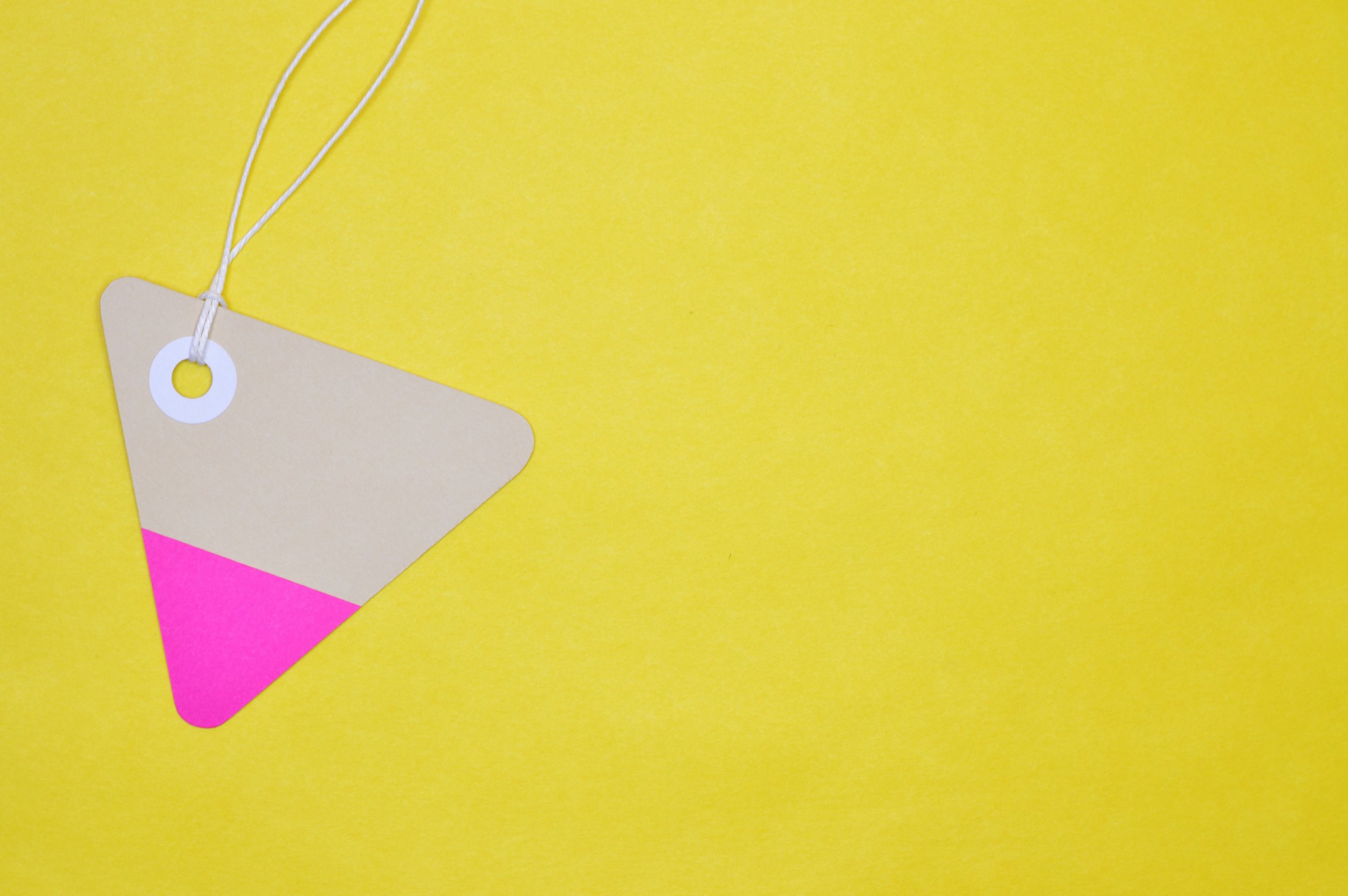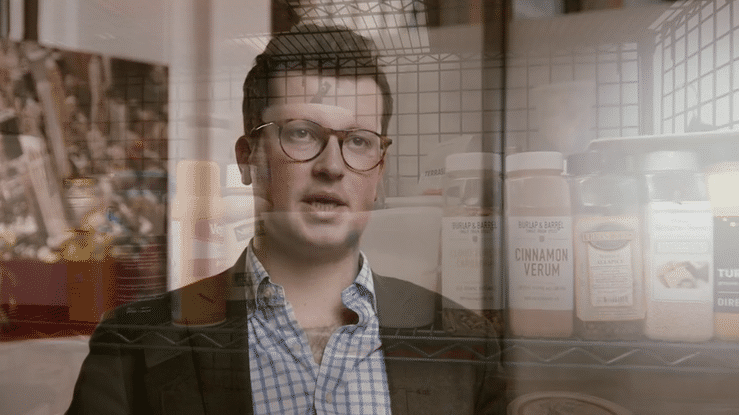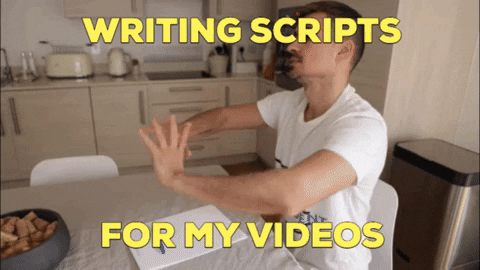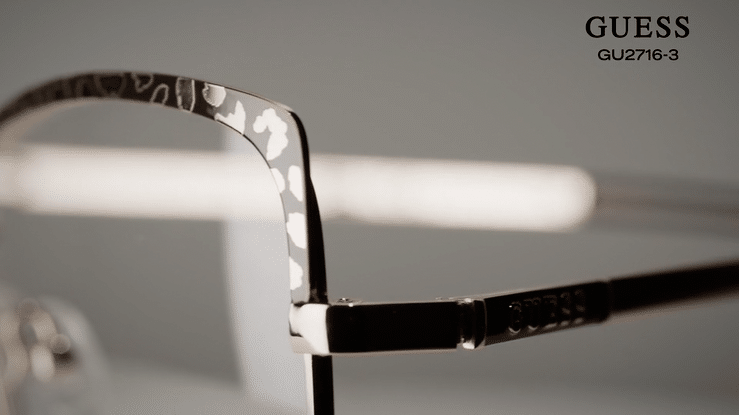
The Storyboard Media Group Blog
What Makes a Great Testimonial Video
Testimonial videos remain one of the best and most important ways of telling audiences about your product or service. But there’s a right way to do them, and some simple rules to follow to make sure you’re doing it right.
This blog post let’s you see how your plan compares to the rules we work from with examples and tips.
What makes a great testimonial video? Can the answer boil down to just one word? We think so. That word is ‘story’.
We’ll grant that we hear this word thrown around quite a lot. Every brand wants to tell a story - to tell their story. Even though it sometimes seems the word is overused, there really is something to it.
WHAT IS “STORY?”
In the example video below, we don’t just hear about the product. We hear first-hand knowledge of someone whose day-to-day has been impacted by it. The product is an intercom system that solves all kinds of problems. The story told by the interviewee is about challenges, personal experiences, the solution given by the intercom system, and how it has positively impacted his work routines. We hear that the unit his company installed is saving time, saving money, and saving misunderstandings.
Of course, we still need to see the product in a real-world use scenario – this video wouldn’t be complete without that. But it’s more about the story.
And one small note: Take notice of how the recommendation, and description of the product, is made right at the start of the video
WHAT OTHER KIND OF “STORY” IS GOOD FOR A TESTIMONIAL VIDEO?
Some clients and brands need extremely personal stories told to impact an audience. In the legal world, decisions about who to turn to in times of personal tragedy can be a big one. We hear from a law firm’s client that after an accident, his life became difficult and he didn’t know what to do or where to turn. For our legal firm client’s audience, this is very important to see in a video. It helps them understand they’re not alone and there is somewhere to turn, and someone that can help.
To help make a more impactful video, it starts with a moment in which things changed forever.
WHAT ARE YOUR FIRST STEPS IN CREATING A TESTIMONIAL VIDEO?
Not all testimonial video are built the same, and they shouldn’t be. But there are ‘rules’ to follow that can be helpful:
First things first: Getting buy-in from an outside person (a client for example) who is familiar with your brand can be a challenge in getting permissions and approvals, and scheduling the necessary block of time on their calendar. Start early.
The person(s) in the video should have first-hand knowledge of the product or service that is being covered. This gives the personal touch that is needed.
The person(s) should speak from the heart so that the audience knows they’re sincere. This means no coaching before the interview, and no memorizing of answers. The interviewee(s) can certainly have advance notice of the questions they’ll be asked so they have ideas about what to say, but that’s about as much as they need before sitting down in front of the camera.
Make sure to ask the right questions of the interviewee(s). First, you need to know what you want the audience to know about your product or service. Then, craft questions that will get answers that cover that messaging.
Don’t forget b-roll - that’s the footage that we add along with the interview to give context and life. B-roll is shown in the two examples above.
Choose people for your video based on their ability to speak clearly about their experiences.
How to Write a Video Marketing Script
Video marketing is a critical component of an overarching marketing strategy, and a good script is essential. It ensures your audio will align with your visuals in a way that hooks your viewer, advances your story, and incentivizes your audience to think, feel, or take a specific action.
Here’s our advice for creating a great script.
Video marketing is a critical component of an overarching marketing strategy, and good scriptwriting is essential. However, it’s not a skill set many marketers learn about or have had to do that often. But It’s more important than ever.
Your video script will act as a blueprint for the video production team. It ensures your audio will align with your visuals in a way that hooks your viewer, advances your story, and incentivizes your audience to think, feel, or take a specific action.
Here’s our advice for creating a great script.
Start with a Brief
Before you can start writing, you really need to know the goal of your video. The brief should provide the important information you need to direct your writing.
A brief should include information about your audience, where they are in the marketing or sales funnel, which platforms you’ll show the video on, and what you want viewers to think, feel, or do after watching your video.
Armed with this information, you’re ready to begin writing.
Draft the Script, but First a Few Tips
Plan for about 125 to 150 words of dialogue per minute. That’s a perfect pace for narration, interviews or voice overs.
For a script, you’ll want to write the way we speak. So as you write it, it’s good practice to read it out loud and see if it sounds the way you would say it. If something is weird, you’ll feel it as you read it.
Read it aloud to other people on the team. If something gets by you, they’ll catch it.
Time yourself while reading in front of others. They can tell you if you’re speed is right, and you’ll know how long your video is going to be. If you want a 60 second video and your read is 75 seconds, you can cut something out or change the wording to hit that 1 minute mark.
Write Your Script in Sections
Your video should follow some basic guidelines for best results. There are four parts that you should include in almost every script.
1. The Opening
Your opening dialogue should be attention-getting. You’ll want to set up an emotional hook, a surprising fact, or a relatable story to engage your viewer and keep them watching.
Often, this when you want to introduce a problem, issue or need to your viewer. Once you’ve grabbed their attention, your goal is to keep them engaged. Tell them exactly why they should care or how this problem impacts them.
2. Present the Solution
Where there is a problem there is also a solution, and you have it. Your product, service or offer needs to be presented as a solution for their issues. It’s also the only one they should consider for the following reasons:
3. Explain Why You, Why Now
In this section, you want to delve a bit deeper into why your viewer needs this solution, now from you and only you. There is something unique about what you do, sell, or provide that nobody else has. Maybe it’s faster, more affordable, or exceptional. Tell them.
4. The Call to Action
The call to action is a critical component of your video that many skip. This is a critical mistake. The viewer won’t take action because you didn’t ask them to! You want your viewer to do something after watching your video. Tell them what that is and how they can easily do it. You might even offer an incentive, if possible.
Script Formatting
Now that you know what you’re going to say, you can pair your words with your visuals. You can format your script in many ways, but the clearest can be a simple two-column table like the one below.
Other options include putting visuals cues in parentheses or italics before or after the dialogue. Work with your production crew to see if they have a preferred format.
In summary
Once you pair the audio and visuals, you’ll have a good idea of what you’ll need to film, the props and set you’ll need, and other elements to support your script and video length. You don’t have to be a literary major to write a great script, but you do need to know what your message is and why you’re delivering it.
What Makes a Great Product Video?
You might only have seconds to capture your customer’s attention with a video to get them interested in your product. Or maybe they’ve come to your website because they’ve heard about you and want to know more. We talk about how to use video to introduce your product, show off its best features, and get conversions.
Shots from a 1-minute product video we created for a beautiful line of watches.
We’ve had the opportunity to create product videos for a wide range of clients. This includes luxury watches, diamonds, highly-engineered umbrellas, high-fashion eye wear and more. We have some ideas for what makes a really good product video.
First things first; Why would you need a product video? There are many reasons which are not limited to:
Launching a new product
Relaunching a product after updating it or rebranding
Refreshing your digital content
Reaching and making inroads with a brand new audience
Raising capital
Showcasing your product at conferences, trade shows
All these reason are very important, so it’s also important to do this right.
1: MAKE IT LOOK GOOD
The right lighting, camera, angles and movement can make all the difference in how your product looks.
Of course, the first thing you need is beautiful product shots. This makes sense, right? Otherwise, what’s the point of your video. But it’s not just about ‘taking pictures’ or ‘shooting some video.’ There’s a lot more to think about. You need to use the right lighting, the right angles, the right camera lenses. Even choosing the right background is important. The point is to show off your product in the best way possible - professionally and beautifully.
2: ENGAGE THE VIEWER
You need to tell the story of your product. That might be the history of the blood, sweat and tears that brought it into existence. Or it could be the story of how your product is helping, or will help, people. It could even be an inspirational story that tells how your product makes people feel.
3: MAKE IT ABOUT MORE THAN THE PRODUCT
What do sushi, candles and flowers have to do with a product video?
Your product is the star of its own product video, but viewers will probably start to lose interest if all they see if product shots - even if those shots are beautiful. So you need to show your product in action. Use lifestyle shots, actors - whatever it takes to create to interest in addition to your product.
As an example, one of our clients provides a video intercom system that makes life easier and more secure for businesses and residences. Using product shots alongside lifestyle shots, we were able to show told a ‘day in the life’ story of someone who lives in a building with the intercom system. We brought in actors to be the main character, a delivery person, a girlfriend and a dog walker. We even got sushi and flowers for a ‘date night.’
4: KNOW YOUR COMPETITIVE EDGE
In addition to sexy product shots, make sure you tell the audience what is special about your product. How does it help people, what can it do for them specifically, what challenges does it address? Is it just something to have fun with like a game, a toy or a new bicycle lineup? How is it different from all the other choices out there?
4: KNOW YOUR AUDIENCE
In the end, one of the above matters if you don’t know your audience. So make sure your messaging speaks to them in a way they can appreciate and understand. Evoke the right emotions to make them stay interested. Give your video the right personality by using humor, facts, an inspirational feel.
Let our team make your team a great video. Your product and our expertise will go a long way.
Benefits of Hiring an International Digital Content Agency
Uh-oh. You’re based in New York but you need an interview filmed in Paris. Or your office is in New Orleans but your product facility is in Athens and you need some film of your product. Have no fear. An agency with international experience can help pull it all together seamlessly quickly.
What is an international digital content agency?
An international digital content agency has their feet in more than one place at all times. They have teams in different places ready to go on your project at a moment’s notice. And they can be where you need to be when you can’t. For Storyboard Media Group, this means the United States and the European Union. But we don’t stop there - we’ve also filmed commercials in Asia, Canada and Greece.
What are the benefits of hiring an international agency?
Although the benefits can be a little different for large international companies and more localized brands, there are some common benefits. It’s going to depend on your brand. For example, we have clients in the fashion industry that have headquarters in the US and the EU. Sometimes they need interviews filmed in the States, and then products and talent filmed in Europe. We handle both aspects seamlessly as opposed to two separate agencies handling a project in two different place. What does all this mean?
One single point of contact - When you have filming happening in France and New York for example, having the ability to use one team provides you with a single point of contact throughout the project.
Cost-effectiveness - One large project worked on by one agency is usually more cost-effective than two different agencies working separately on the exact same project. Two separate agencies may end up producing the exact same amount of content, but at nearly double the cost.
Time savings - Let’s face it; If you work in the Los Angeles time zone, it can be difficult to communicate in a timely manner with a London or Paris team. A single point of contact can communicate with you on your time to make life a little easier.
They can be where you can’t - It’s simple. You office is in New York but you need something filmed in Lisbon. Instead of taking the time to book a flight, fly across the Atlantic, stay in a hotel and fly back to New York you can just set up normal phone meetings to follow the developments of your project. The agency can be your eyes and ears on the ground.
Cultural awareness - International agencies understand different work cultures, have unique connections and partners, where to find talent, and understand the legal situations on the ground. This covers things like getting permits, and paying talent.
Quick maneuvering - Because they’re international, these agencies are used to working intelligently and figuring out challenges before they become a problem. This saves a ton of time and headaches.
Remote check-ins and quality control - A big part of any project is giving you - the client - the ability to be as present as possible throughout the process. That means being able to pick talent, pick locations and watch as filming takes place. And all of this can be done from the comfort of your own office. Using tech we can take you on virtual location scouts, send head shots and demo reels of available talent, and let you watch remotely as filming happens on your project.
What are the steps to beginning an international project?
While the complete answer to this will depend on your specific project, here is a rough guide to what you can expect. Once you Find an agency that works in the area(s) you need to have covered:
Identify who the contacts will be for your team. For example, if you have offices in both Chicago and Madrid, and you work in Chicago, figure out who the main contact in Madrid will be for the production team.
Schedule the shoot days in all locations. Your agency can accomplish this as the connecting piece between all parties. But be ready to wake up in the middle of the night if filming needs to happen during the morning in Europe and it’s 2AM your time.
Schedule on-going check-in meetings to make sure everything stays on time and budget.
That’s it. That’s all there is to it. Of course, every project has a lot of other steps involved, but these steps listed are mostly confined to international projects.
If you’re ready to travel the world without leaving home, throw us a note. Let’s discuss how we can help you span continents for your brand seamlessly and easily.
How Video Helped A Crowdfunding Campaign
What's better than raising $80,000 dollars on crowdfunding for a new business venture? How about raising more than $105,000 for a new business venture?
Our client, maker of an amazing line of high-quality umbrellas, knew that video should be a huge part of their campaign and asked us to help with a video that shows the engineering, technology and benefits of the product.
At one time or another we’ve all forgotten or misplaced our umbrellas on a rainy day. When that happens we’ve had no choice but to dash through the wind and rain head-on, and arrive at our destination drenched, cold and looking like something the cat dragged in.
Our client knows the headache of the forgotten umbrella. And of the need to buy a cheap throwaway replacement just to make it through an afternoon and hoping the wind won’t destroy it. That’s why the CEO and Founder decided to make some of the best, if not THE best, umbrellas around. Engineered for strength, and designed for a sleek and fashionable look and feel. These are the types of umbrellas you really, really don't want to lose. And they made sure you never will with a new idea based on not so new technology.
To make sure your umbrella will always be at your side when it counts, they paired their umbrellas with a sensor that can alert you when you leave it behind. When it was time to start production on this new umbrella line, they turned to crowdfunding.
Filming took place over three afternoons at five different locations. The resulting video helped ensure their goal of was not only met, but passed by a large amount. The video, getting more than 20K views, helped to successfully raised over $105,000 with close to 1000 funders. That equals success.
TIPS FOR CROWDFUNDING WITH VIDEO
This video was a crucial component for our client’s crowdfunding success because it covered these points:
It let them know there was a real company behind the “ask” - A well-crafted video tells viewers that a real company is behind the words and pictures, and lets them know their support is going to something that is also real
It excited people, or got them to think or feel a certain way - We showed people actually using the umbrellas in ways that matched the message - showing how easy it is to pair the app and umbrella, how the app helps you remember your umbrella, how compact they are, how large they are, etc.
It set them apart from their competitors - At the time our client went live with their campaign, another umbrella company was already on the platform and asking for funding. But this video completely differentiated our client’s brand and set them far apart from the other. Part of the appeal of these umbrellas is that they're incredibly well-crafted. So we showed some of the process that is involved to make the umbrellas and explained what goes into each one. From blueprints to product shots, and from a wind test to explaining the app and proximity awareness.
It was a part of the whole - It was used in addition to a very well-developed, and well thought out whole campaign. This means that while the video was impactful, the whole campaign needs to represent the brand and the ask in order to get the funding needed.
If you need help or would just like to discuss a project you have in mind, reach out and say hello today. We are a video production and video marketing company with capabilities in both the US and EU and we're ready to help. Reach out and say hello!













